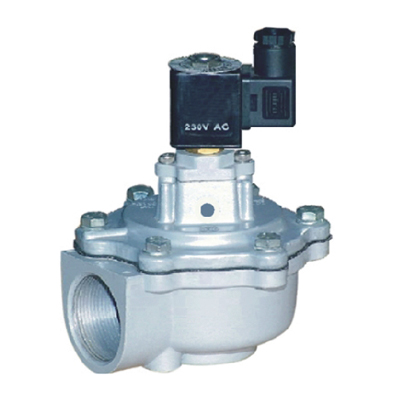Types
Solenoid valves are defined by three general components, to help manufacturers select which valve may be best:
- Material being controlled, like solenoid water valves and solenoid air valves
- Valve construction/design, like proportional solenoid valves, 3-way solenoid valves and plastic solenoid valves
- How they are powered, like 12-volt solenoid valves and pneumatic solenoid valves
Solenoid Water Valve
Solenoid water valves, also called hydraulic solenoid valves, direct water flow with pilot-operated, normally open valves
Solenoid Air Valve
Solenoid air valves, also called gas solenoid valves, air valves or pneumatic solenoid valves, regulate air and gas flow with diaphragms and gas pressure. They are able to maintain both regular pressures, like those maintained for home heating and cooling, and extremely high pressures, like those regulated for power tool operation.
Proportional Solenoid Valve
Proportional solenoid valves work like regular pneumatic valves, aside from the fact that they operate with more advanced flow control capabilities, which allow them to establish variable flow, proportionate to the valve’s electrical control signal.
Twelve-Volt Solenoid Valve
Twelve-volt solenoid valves carry 12 volts, supplied by its DC power source. (Twelve volts are standard.)
Solenoid valves are either pilot-operated or direct-acting.
Pilot-Operated Solenoid Valve
A pilot-operated solenoid valve, which is a combination of either a hydraulic valve or a pneumatic valve and a smaller solenoid valve, uses a diaphragm rather than a plunger to create differential pressure and thereby control flow.
Direct-Acting Solenoid Valve
A direct-acting solenoid valve uses a plunger that has direct contact with the in-flow valve body opening, called an orifice. In this case, the plunger opens and closes the orifice to control flow.
Semi-Direct Operated Solenoid Valve
A semi-direct operated solenoid valve borrows attributes from both direct act and indirect act valves. This allows them to work from 0 bar (0 psi) while handling a high flow rate. Usually, they are used for high pressure applications.
High Pressure Solenoid Valve
High-pressure solenoid valves are excellent resources for flow control in areas that are incompatible with other valves, like in work areas that engage with dangerous machinery or inaccessible lines.
Stainless Steel Solenoid Valve
Stainless steel solenoid valves, as their name indicates, have a stainless steel body. Because stainless steel is corrosion and abrasion resistant, stainless steel solenoid valves work well with chemical processing applications, which require outstanding control of bases, acids, and analytical reagents.
Miniature Solenoid Valve
Miniature solenoid valves are the perfect size for delicate medical equipment like biotechnology equipment, portable medical devices, and gas analyzers.
Butterfly Valve
A butterfly valve is a solenoid valve that regulates or isolates fluid flow. Its closing mechanism is a rotating disc positioned in the center a pipe, where a rod passes it through it to an actuator on its exterior. When the actuator rotates, the disc will turn as well, either perpendicular or parallel to the flow. A butterfly valve is always present within a flow.
Actuated Ball Valve
An actuated ball valve is named as such because it contains a ball with a small hole in the middle, which helps it control material flow through a pipe, and an actuator that rotates the ball. When the actuator rolls the ball, the flow either starts or stops. One of the most common types of ball valve is the three-way ball valve, which has three ports. Primarily, actuated ball valves are used to start and stop flow, but not necessarily control it beyond that. Actuated ball valves are best for use with high flow applications and applications requiring the option for manual override.
Tubular Solenoid Valve
Tubular solenoid valves are simply tube-shaped solenoid valves. They are usually used with DC power applications only.
Poppet Valve
A poppet valve, sometimes called a mushroom valve, consists of an oval or round hole, along with a disc-shaped tapered plug located at the end of a shaft called a valve stem. The poppet valve, which can be closed or open type, is used for controlling engine air/gas flow quantity and timing. It is made from stainless steel or brass.
Brass Solenoid Valve
Solenoid valves made from brass are great for use with non-corrosive substances, like inert gas, water or light oil. They are not strong enough to carry highly corrosive substances.
Tags:-
Solenoid Valve Manufacturer, Solenoid Valve Supplier, Solenoid Valve Exporter in India, Pulse Valve Dealers, Solenoid Valves Exporters of Pulse Valve, Solenoid Valve in India.

